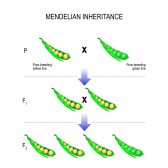Definition
noun, plural: microelectrodes
An electrode with a tip having dimensions of the order of one micrometer, thereby extremely small enough to puncture the plasma membrane without causing damage, often used for electrophysiological studies, such as the recording of the resting and the action potentials inside the cell, and the measurement of intracellular ion and pH levels
Supplement
Microelectrodes are very small electrodes (about one micrometer in dimensions) that can be inserted into the plasma membrane while not destroying or causing damage to the cell. They are used for studying the electrophysiology of living cells and tissues. They are used to record the neural signals or the electrical stimulation of the nervous tissue. They are used specifically for potential recording, current injection, introduction of ion-selective resins into the cell in order to measure the resting and action potentials or the free concentration of cytosolic constituents.1 Microelectrodes are made from inert metals with high Young modulus such as tungsten, stainless steel, platinum, and iridium oxide.2
Word origin: Greek mīkrós (small) + electrode
See also:
- electrode
- action potential
- resting potential
- intracellular
- pH
Mentioned in:
Reference(s):
1 J. V. Halliwell, M. J. Whitaker and D. Ogden. Using microelectrodes. www.utdallas.edu/~tres/microelectrode/microelectrodes-ch01.pdf Link
2Cogan, Stuart F. (August 2008). “Neural Stimulation and Recording Electrodes”. Annual Review of Biomedical Engineering 10 (1): 275–309. Link







